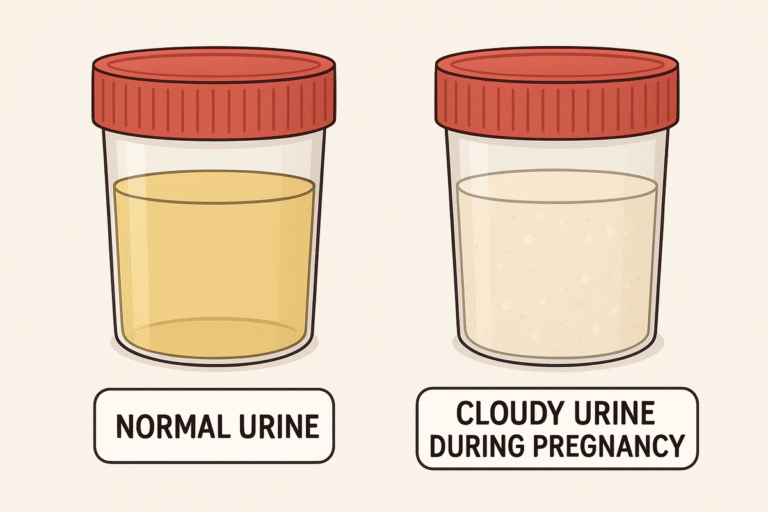For many men, ejaculation represents the peak of sexual pleasure, a powerful and satisfying release. However, for those who experience painful ejaculation, this natural function can become a source of anxiety, discomfort, and fear. If you are reading this, you may be one of those men, feeling confused and embarrassed while searching for answers. You are not alone. Painful ejaculation, medically known as dysorgasmia or odynorgasmia, is more common than many realize and often indicates an underlying condition that requires attention.
This guide aims to clarify this troubling symptom by exploring the various causes of painful ejaculation, outlining the path to a proper diagnosis, and detailing effective treatment options. Ignoring the issue may lead to increased stress and potential health complications. Understanding it is the first and most crucial step toward reclaiming your sexual health and well-being.
What Is Painful Ejaculation?
Painful ejaculation is not a disease but rather a symptom of an underlying problem. The pain can manifest in different ways, providing essential clues for your doctor. Discomfort may range from a mild ache to severe, sharp, or burning pain that can be debilitating. For some men, pain is localized to the penis, testicles, or groin area. For others, it can radiate to the lower abdomen, pelvis, perineum (the area between the scrotum and anus), or even the lower back.
Link Between Ovarian Cyst And Infertility
The timing of the pain is also significant. It may occur just before, during, or immediately after ejaculation and can last for a few minutes or persist for several hours. Understanding this spectrum is vital for effective communication with a healthcare provider, which is the next critical step if you are experiencing this issue. You should not “tough out” or accept it as a new normal.
Causes of Painful Ejaculation
The biological process of ejaculation is complex, involving synchronized contractions of muscles, the nervous system, and several glands. A disruption in any part of this system can lead to pain. The causes of painful ejaculation vary widely, ranging from common infections to more complex chronic conditions. Identifying the exact cause is crucial for effective treatment; therefore, self-diagnosis is strongly discouraged.
Inflammation and Infection: Leading Causes of Painful Ejaculation
Infections and inflammatory conditions are among the most frequent culprits behind painful ejaculation. These issues cause swelling and irritation in the sensitive tissues of the reproductive and urinary systems that are actively involved during ejaculation.
- Prostatitis: This inflammation of the prostate gland is arguably the most common cause of painful ejaculation. The prostate produces a significant portion of seminal fluid. When inflamed, whether due to a bacterial infection (acute or chronic) or a non-bacterial cause (chronic pelvic pain syndrome), the muscular contractions during ejaculation can squeeze the swollen gland, resulting in considerable pain often described as a deep, throbbing ache.
- Urinary Tract Infections (UTIs) and Sexually Transmitted Infections (STIs): Infections such as chlamydia or gonorrhea can cause inflammation in the urethra (the tube that carries both urine and semen out of the body). As semen passes through the inflamed urethra during ejaculation, it can result in sharp, burning pain.
- Urethritis: Specifically referring to inflammation of the urethra, this condition shares symptoms with UTIs and STIs and directly contributes to painful ejaculation.
- Epididymitis and Orchitis: The epididymis is the coiled tube at the back of the testicle that stores and carries sperm. Orchitis refers to inflammation of the testicle itself. When these structures become infected or inflamed, the jarring motion and pressure during ejaculation can trigger intense pain in the scrotum.
Anatomical and Structural Issues
Painful ejaculation can sometimes stem from the physical structure of the reproductive organs.
- Obstruction: A blockage in the ejaculatory ducts or seminal vesicles may lead to painful semen backup during emission. This blockage can result from cysts, stones (similar to kidney stones but located in the prostate), or calcifications.
- Vasectomy: After a vasectomy, some men may notice temporary changes in ejaculation. A small percentage may develop Post-Vasectomy Pain Syndrome, which can include painful ejaculation due to pressure or congestion in the reproductive system.
- Pelvic Floor Muscle Dysfunction: The pelvic floor muscles are vital for ejaculation. If these muscles are too tight, in spasm, or weak, they can cause pain during the intense contractions of orgasm. This dysfunction is often linked to chronic stress, past injuries, or poor posture.
Chronic Health Conditions and Medications
Underlying systemic health issues and medications can also contribute to painful ejaculation.
Myo and D-Chiro Inositol in Fertility Challenges
- Diabetes: Uncontrolled diabetes may lead to diabetic neuropathy, a nerve damage condition that affects pelvic nerves, altering sensation and causing pain during sexual activity.
- Neurological Disorders: Conditions such as multiple sclerosis (MS) or a history of spinal cord injury can disrupt nerve signals controlling ejaculation, resulting in dysfunction and pain.
- Medications: Certain prescription drugs have known sexual side effects. Some antidepressants, especially SSRIs (Selective Serotonin Reuptake Inhibitors), may cause painful ejaculation in some men. Other medications for high blood pressure or prostate conditions can also be contributing factors.
- Psychological Factors: While less common as a direct physical cause, stress, anxiety, depression, and relationship issues can increase muscle tension and alter pain perception. This can make any underlying physical discomfort during ejaculation feel more intense. Additionally, a history of sexual trauma may manifest as physical pain during sex.
The Serious but Rare: Prostate Cancer and Surgery
In rare cases, painful ejaculation may indicate more serious conditions.
- Prostate Cancer: Although not a common early symptom, pain during ejaculation can occur with prostate cancer, particularly if it affects the ejaculatory ducts. While it is more likely caused by other conditions mentioned above, this possibility necessitates medical evaluation.
- Post-Surgical Effects: Surgeries in the pelvic region, especially prostatectomy (removal of the prostate gland for cancer), can result in painful ejaculation. This is due to anatomical changes and potential nerve damage from the procedure. Radiation therapy to the pelvic area may have similar effects.
Diagnosing the Root Cause
Seeing a doctor is a courageous and crucial step. You will likely begin with your primary care physician, who may refer you to a urologist specializing in male urinary and reproductive systems. The diagnostic process includes several steps to identify the exact cause of your painful ejaculation.
Detailed Medical History
Your doctor will ask specific questions about your pain — its location, character, duration, and timing. They will inquire about your sexual history, recent illnesses, and all medications and supplements you are taking. Honesty is vital in this conversation.
Physical Examination
This exam will likely include a genital examination and a digital rectal exam (DRE) to assess the prostate gland for tenderness, swelling, or abnormalities.
Laboratory Tests:
- Urinalysis and Urine Culture: These tests check for signs of infection in the urinary tract.
- STI Testing: This helps rule out or confirm sexually transmitted infections.
- Blood Tests: These tests check for systemic infections, prostate-specific antigen (PSA) levels to screen for prostate issues, and blood sugar levels to assess for diabetes.
- Seminal Fluid Analysis: A sample of your semen may be analyzed for white blood cells (indicating inflammation) or bacteria.
Imaging Studies
In some cases, an ultrasound of the scrotum, prostate, or pelvic area may be ordered to visualize structures and identify obstructions, cysts, or stones.
Also Read: Subfertility And Its Causes
Treatment Options for Painful Ejaculation
The treatment for painful ejaculation is entirely dependent on the underlying cause. There is no one-size-fits-all solution, which is why an accurate diagnosis is so critical.
- Treating Infections: Bacterial infections like prostatitis, epididymitis, or STIs are typically treated with a course of antibiotics. It is vital to complete the entire prescription even if symptoms improve early.
- Managing Inflammation: For non-bacterial prostatitis or chronic pelvic pain, treatment may involve alpha-blocker medications to relax muscle tissue, anti-inflammatory drugs (like ibuprofen), and muscle relaxants.
- Addressing Medication Side Effects: If a medication is suspected to be the cause, your doctor may adjust your dosage, switch you to a different drug, or advise on the timing of the dose in relation to sexual activity. Never stop taking prescribed medication without consulting your doctor.
- Pelvic Floor Physical Therapy: This is a highly effective treatment for men with pelvic floor muscle dysfunction. A specialized therapist can teach you exercises to relax, stretch, and strengthen these muscles, alleviating pain.
- Psychological Support and Counseling: If stress, anxiety, or past trauma is a significant component, speaking with a therapist or counselor can be incredibly beneficial. Cognitive-behavioral therapy (CBT) can help manage pain perception and reduce anxiety around sex.
- Surgical Intervention: In sporadic cases where there is a physical obstruction, like a stone or cyst that is causing the problem, a minimally invasive surgical procedure may be necessary to remove it.
Prevention and When to Seek Immediate Help
While not all causes of urological issues can be prevented, adopting a healthy lifestyle can significantly support your urological health. Key practices include engaging in safe sex to prevent STIs, staying hydrated, managing stress, and performing regular pelvic floor exercises, such as Kegels. However, the most crucial aspect of prevention is early intervention. Seek immediate medical attention if painful ejaculation is accompanied by severe pain, fever, chills, blood in your semen (hematospermia) or urine, difficulty urinating, or a visible lump in your testicle. These symptoms may indicate a severe infection or other critical conditions.
Conclusion: You Don’t Have to Live with the Pain
Painful ejaculation is a distressing symptom that signals an underlying issue. Ignoring it can lead to worsening conditions, increased anxiety, and a reduced quality of life. Remember that this is a common problem with various potential causes. It is highly treatable once the root cause is identified. Seeking help from a knowledgeable healthcare professional demonstrates strength. You deserve a healthy and pain-free sex life. Take the first step today by scheduling an appointment with your doctor and beginning your journey toward answers and relief.




